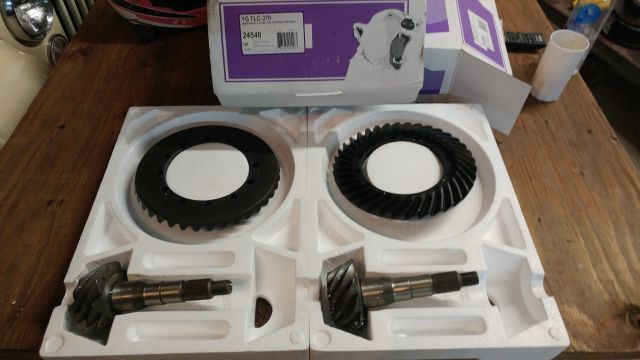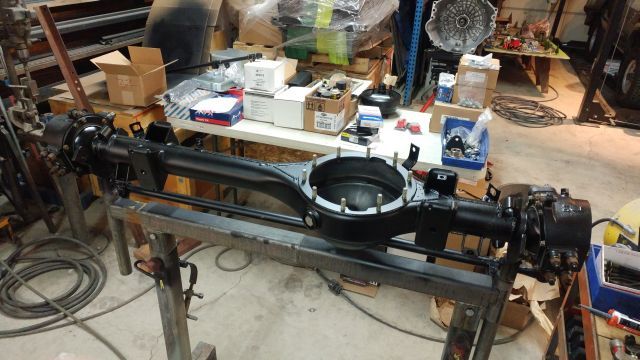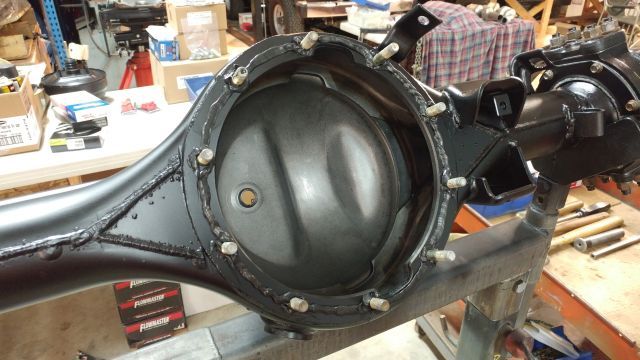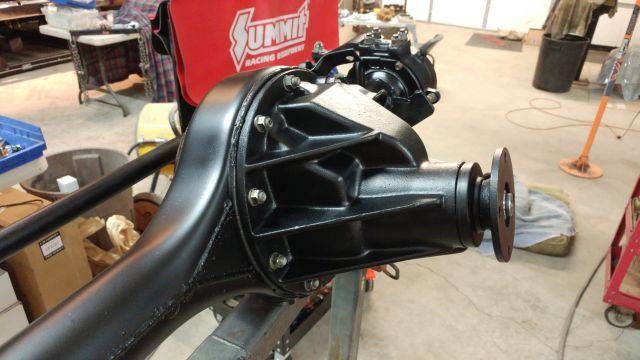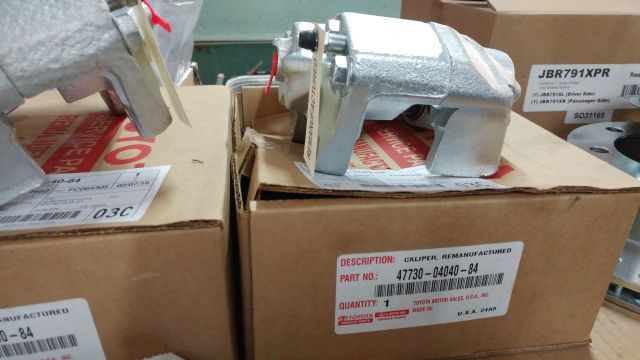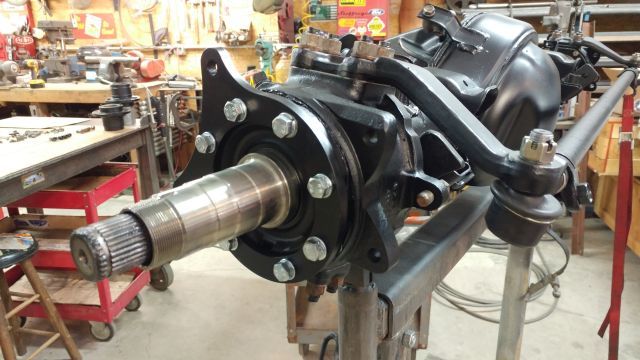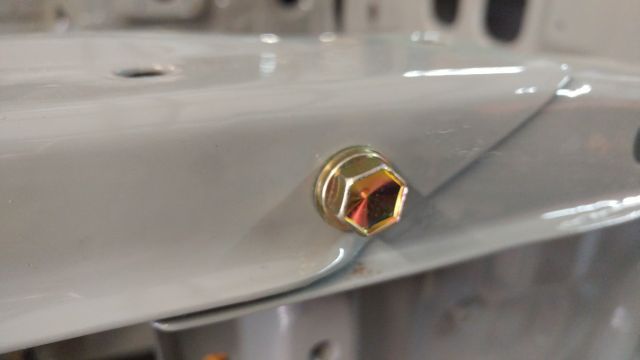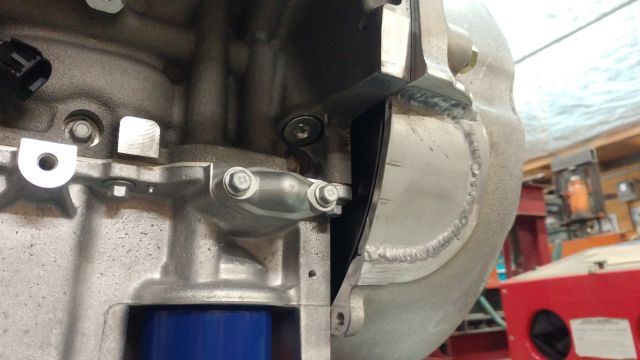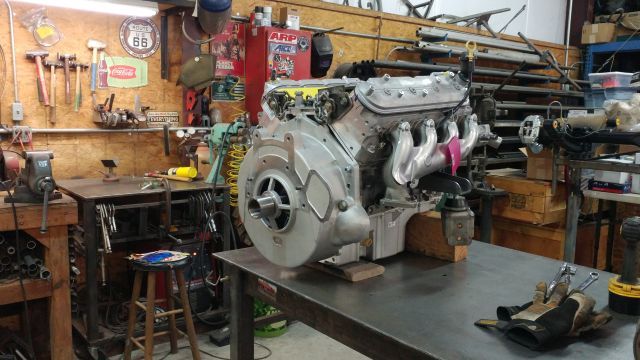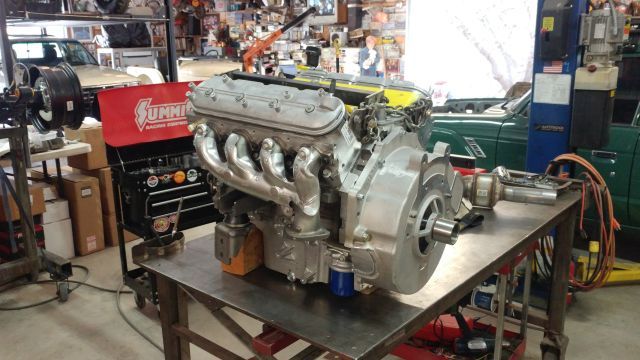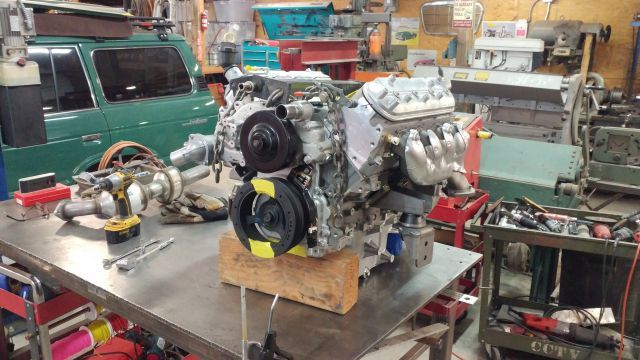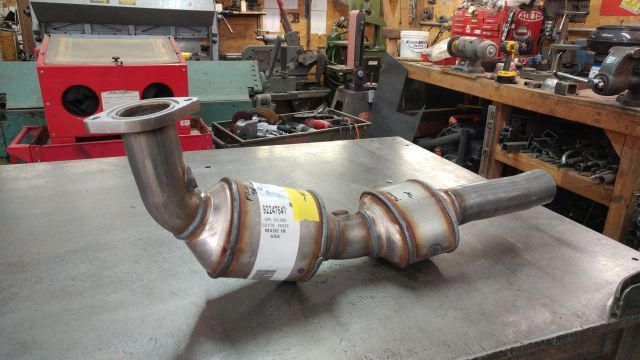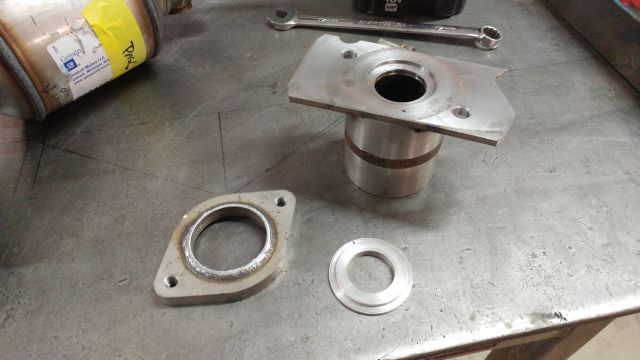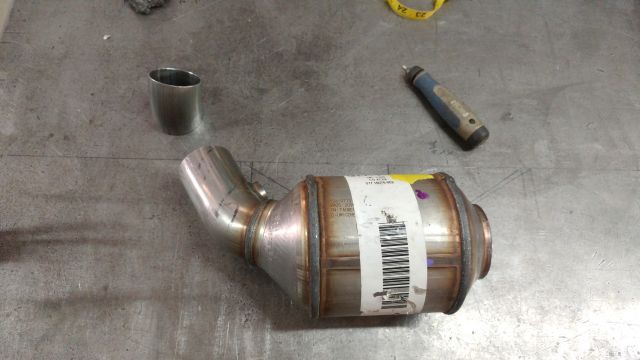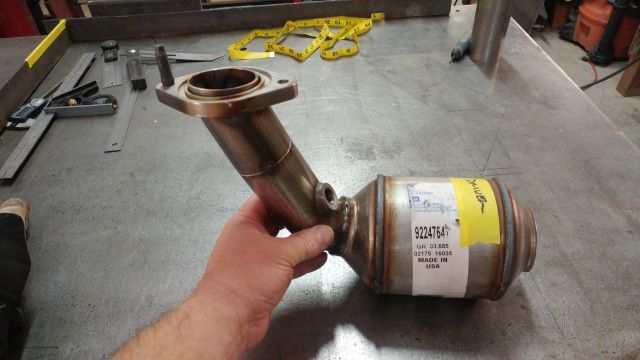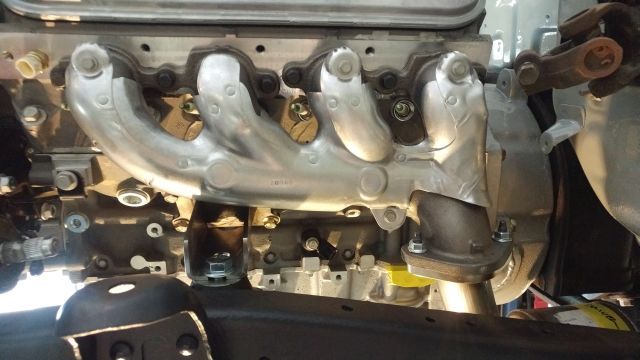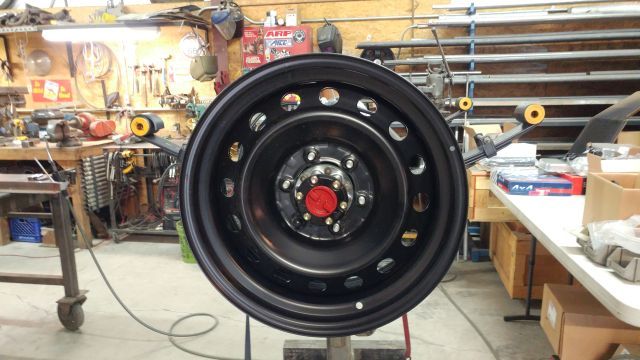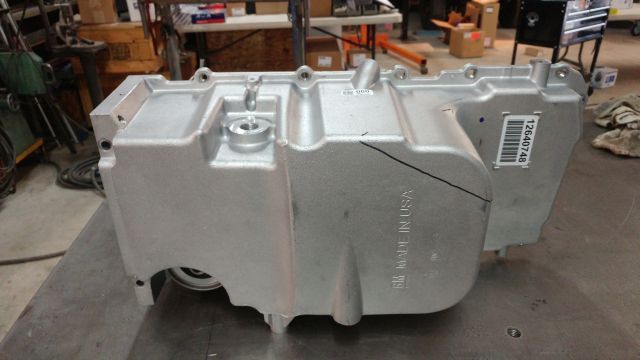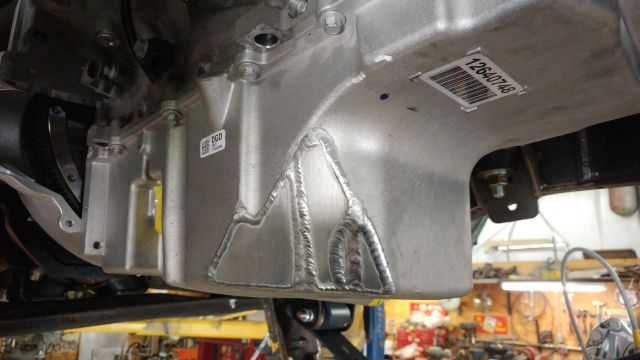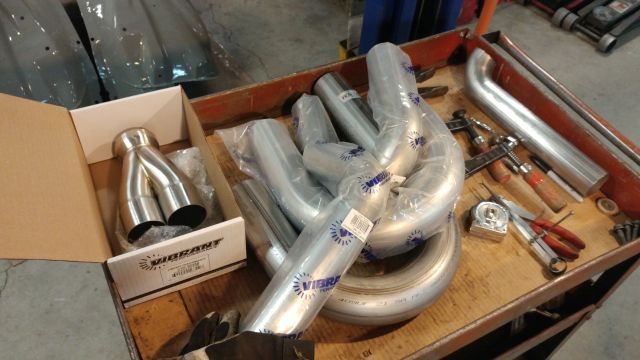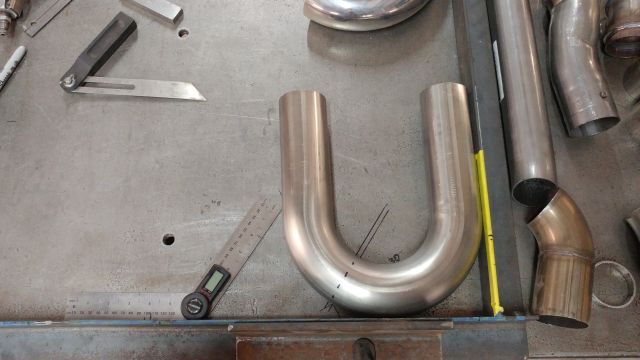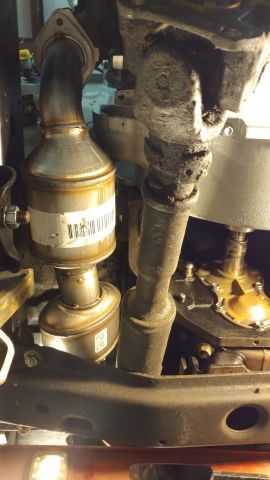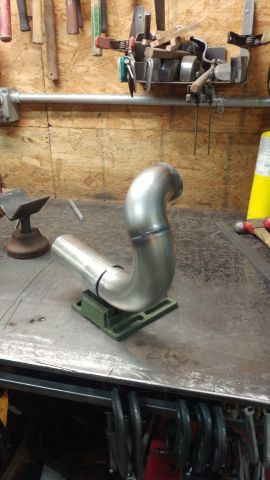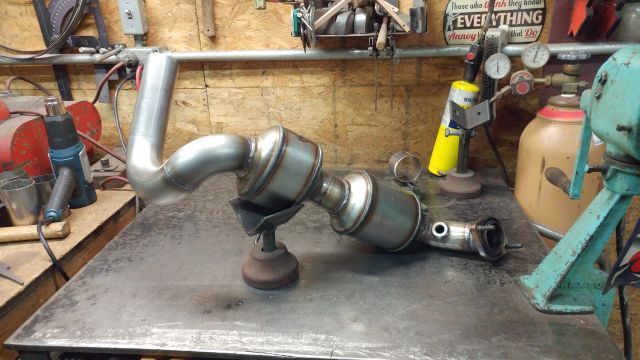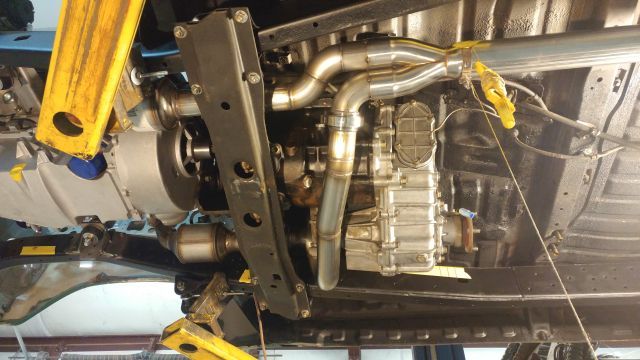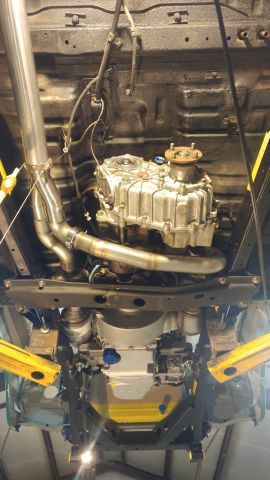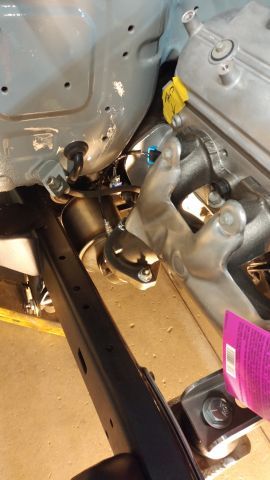Stoffregen Motorsports
Explorer
A LC9 truck accessory drive was purchased and installed for mock up.

Then measurements were taken, the truck centerline was mapped out on the floor of the shop and adjustments were made to get it lined up.

With the new accessory drive installed, we ran into our first problem. And it wasn't a small one.


I knew when we ordered the LC9 accessory drive that there would be interference with the alternator bracket, but ICT billet makes a relocated idler bracket to fix this. Others have done this and that was the plan. But the throttle body contacting the water pump outlet was not something we knew about or could work around. I found out the hard way that the throttle bodies are different and only the old style fly by wire throttle body will work with the truck drive. Needing to come up with a solution, I figured there were four options:
- Move the water outlet - this would make the water pump irreplaceable in an emergency, so big no.
- Raise the intake manifold with spacers and space the throttle body out from the intake. Remember this engine came with specific guidelines to make it emissions compliant, so use of these spacers was not an option while still being emissions compliant.
- Use a truck intake, but for the same reasons listed above, couldn't do that.
- Bite the bullet and completely redesign the install layout and purchase a Corvette accessory drive. This was the right answer, ad though it cost me $1500, I was happy to have an option. Anyone need a brand new LC9 accessory drive?

Then measurements were taken, the truck centerline was mapped out on the floor of the shop and adjustments were made to get it lined up.

With the new accessory drive installed, we ran into our first problem. And it wasn't a small one.


I knew when we ordered the LC9 accessory drive that there would be interference with the alternator bracket, but ICT billet makes a relocated idler bracket to fix this. Others have done this and that was the plan. But the throttle body contacting the water pump outlet was not something we knew about or could work around. I found out the hard way that the throttle bodies are different and only the old style fly by wire throttle body will work with the truck drive. Needing to come up with a solution, I figured there were four options:
- Move the water outlet - this would make the water pump irreplaceable in an emergency, so big no.
- Raise the intake manifold with spacers and space the throttle body out from the intake. Remember this engine came with specific guidelines to make it emissions compliant, so use of these spacers was not an option while still being emissions compliant.
- Use a truck intake, but for the same reasons listed above, couldn't do that.
- Bite the bullet and completely redesign the install layout and purchase a Corvette accessory drive. This was the right answer, ad though it cost me $1500, I was happy to have an option. Anyone need a brand new LC9 accessory drive?

